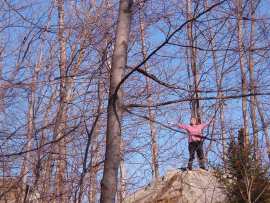I offer writing services to organizations and businesses, specializing in natural science, natural history, wild edibles, and outdoor education. To review my work, please visit me at Hearken to Avalon.
Uncategorized
Working with Others
How do you want your business to run?
Like a well-oiled machine or a hive of honeybees? The beehive is the model, the original. Workers are trained in their job. They are clear on the expectations. As they get older they gain new skills and perform new tasks. They work for the betterment of the hive. And they love to dance!
Enliven your workers with sweetness.
Ask yourself and your employees:
- What are you good at?
- What are you proud of in your job?
- What tasks bring you joy and/or a sense of accomplishment?
Here’s the thing – all jobs matter; otherwise why have them in place? Whether you clean the toilets, enter the data, teach the students, design the circuitry, oversee the floor, supervise the staff, make executive decisions, schedule the delivery, make the beds – all positions have a purpose. All have identifiable goals and actions. It is like the beehive. You have job; perform it to the best of your ability and for the greater good of the community. Do your job with pride.
Yes, life can be messy. But tell true, if a substance were to fall on you, wouldn’t you rather it be sweet honey instead of used oil?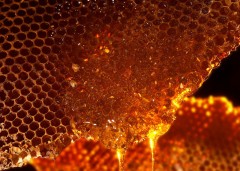
Greening Your Wedding
Wedding Planning
 Planning a wedding can be a delightful, stressful, exhilarating, frustrating, joyous, throw-up-your-hands-exacerbating, and a religiously epiphanic experience – just to throw out a few descriptive words on the subject.
Planning a wedding can be a delightful, stressful, exhilarating, frustrating, joyous, throw-up-your-hands-exacerbating, and a religiously epiphanic experience – just to throw out a few descriptive words on the subject.
So this is your special day, remember that as you are planning it; YOUR special day! You know you want the day perfect; or at least as close to perfection as possible. In all your plans and dreams, know there is absolutely no reason to go into major or even minor debt. It’s one WONDERFUL AMAZING DAY…AND it’s one day.
In this economic climate you and your beloved are doing your best to balance inviting all those people you love plus those you politically can’t not invite to stay a part of the family, where to have it, where’s the food coming from, the band, the D.J., the…this may be one of those moments you decide to challenge your invitees to track you through the woods and those that can actually locate you can be part of the festivities of gathering and preparing a wild edible feast. Okay so that won’t necessarily work but it can be a nice fantasy.
How to Green Your Wedding
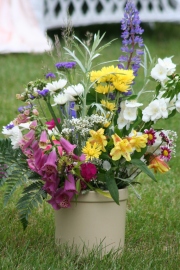 It can be easy to be green when planning your wedding. And being green doesn’t have to mean spending more. In fact when the average in 2009 for wedding was $27,000, Frank and I had our wedding for $7,000. I know! Right?! And we had absolutely delicious food, entertainment including a giant Goddess Puppet and drumming, and opera singing for our cake cutting. Yes there are ways to save money and be green and have a GORGEOUS DAY! Really, you can have it all!
It can be easy to be green when planning your wedding. And being green doesn’t have to mean spending more. In fact when the average in 2009 for wedding was $27,000, Frank and I had our wedding for $7,000. I know! Right?! And we had absolutely delicious food, entertainment including a giant Goddess Puppet and drumming, and opera singing for our cake cutting. Yes there are ways to save money and be green and have a GORGEOUS DAY! Really, you can have it all!
To green up your wedding take into consideration:
- Waste reduction; any throw away products you can avoid, do
- Resource conservation; whatever you can reuse, the better for you and the environment
- Pollution prevention
- Environmentally friendly products and services
- Support of the local economy
Presents!
If you are a couple who has already moved in together and have enough toasters, consider the purpose of gifts coming from your attendees. Yes we all like gifts. I am not suggesting you give up your gifts. But if you already live together, ask a few friends to help coordinate the purchase of a coveted experience or bigger ticket item you can’t afford on your own. Whittle your list to items you both really need and want and that family and friends can put money towards. I had two friends coordinate the purchase of a food dehydrator and a massage table. What fun!
Eat, Drink & Be Merry
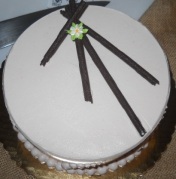 Personally I love potluck parties. I love new taste sensations and enjoying a variety of foods. And since Frank and I already lived together we felt we didn’t need much in the arena of gifts so we asked our local friends to bring potluck. It wasn’t that challenging to coordinate. But then I am a professional coordinator so you may want help if organizing is not something you enjoy doing. Ask a friend to do it for you. And bonus, any leftovers go home with your guests so there is less to pick up. Just make sure that you cater some food for those out-of-town guests who might have a hard time carrying their dish through customs. I mean how are they going to explain Plum Kuchen without it getting sampled and then devoured?
Personally I love potluck parties. I love new taste sensations and enjoying a variety of foods. And since Frank and I already lived together we felt we didn’t need much in the arena of gifts so we asked our local friends to bring potluck. It wasn’t that challenging to coordinate. But then I am a professional coordinator so you may want help if organizing is not something you enjoy doing. Ask a friend to do it for you. And bonus, any leftovers go home with your guests so there is less to pick up. Just make sure that you cater some food for those out-of-town guests who might have a hard time carrying their dish through customs. I mean how are they going to explain Plum Kuchen without it getting sampled and then devoured?
If you are going to work with a caterer, ask the business where and how they purchase foods for the menu. Request that they support local suppliers, buy from local farmers, and source as much of the food and drink from inside your state as is possible. One bride I worked with managed to get all of her needs met in state, even the wine. I was impressed! I was only responsible for sourcing food and flowers from Western MA but she had other coordinators working in Eastern MA and between the bride and her crew we did it!
Inviting Your Peeps
Though I wanted to go paperless and just e-vite with details on a website, Frank and I realized two things, one, not everyone on our list has email (my Grandma for one), and websites are not always as accessible to just your guests as you would like them to be.
So we opted for a compromise. The majority of our guests received an invitation via email. Our family members received a paper invitation on recycled paper with a return R.S.V.P. envelop.
There are a plethora of gorgeous 100% post-consumer recycled paper options as well as non-tree paper options for use as invitations, the wedding program, and menu.
And how to cut down on pollution associated with travel? For those guests coming in from faraway, you can purchase carbon-offsite credits through a number of non-profits or businesses. In choosing this option, check thoroughly to make sure your credits are actually making a positive impact. And where will those out-of-towners stay? You can check with the hotels and B&Bs in your area to see if they are green certified.
Dressing Up
 Regarding the bride and groom outfits, the best option is to find used treasures or buy or make something exquisitely enjoyable that you can wear again and again. What is with the concept of buying an outfit you only wear once and never get to enjoy again? Wear a dress only for one day? If I love wearing something I want to be able to wear it again. For me, I was so taken with having a dress made for me that I went with a local seamstress so we could co-design the gown and decide on best fabrics for it. I then bought the fabric at a local business, and had my seamstress make me my dream dress that I could wear again to special occasions. And I have and I LOVE IT!
Regarding the bride and groom outfits, the best option is to find used treasures or buy or make something exquisitely enjoyable that you can wear again and again. What is with the concept of buying an outfit you only wear once and never get to enjoy again? Wear a dress only for one day? If I love wearing something I want to be able to wear it again. For me, I was so taken with having a dress made for me that I went with a local seamstress so we could co-design the gown and decide on best fabrics for it. I then bought the fabric at a local business, and had my seamstress make me my dream dress that I could wear again to special occasions. And I have and I LOVE IT!
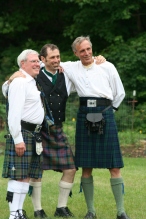 I did not ask our merry men and women to dress in anything particular; just something they loved and looked beautiful and that they could wear outside on a warm day. However, if you do want your wedding party to color-coordinate, I do recommend you considering outfits that can be worn again to other functions. Again, why have a beautiful dress in your closet if you can’t wear it again?
I did not ask our merry men and women to dress in anything particular; just something they loved and looked beautiful and that they could wear outside on a warm day. However, if you do want your wedding party to color-coordinate, I do recommend you considering outfits that can be worn again to other functions. Again, why have a beautiful dress in your closet if you can’t wear it again?
What goes on the tables
Renting dish, glass, and silverware is probably less environmentally taxing than disposable items. However, another option is if your wedding is scheduled anywhere between spring and fall consider compostable dishware, cups, and utensils. There are many available on the market and some you can purchase locally if you have a food coop. You do need a place to put the food waste and compostable dishware so check with local farmers and gardeners if they able to accommodate you depending on the size of your party. Okay so yes our guests had to be creative and say, “clink, clink, clink” to get us to kiss, but it was fun to hear them all trying out ways to make themselves sound like silverware clinking on glasses. I was also able to have all my compostables composted right on-site with a local gardener using the site as a demonstration composting system for our town.
Now about those bizarre little party favors to thank your invitees for attending your party. Who came up with that idea? Yes, sure you can spend money on bulbs or native seeds as a meaningful gift that will live and grow like your love. Still, a friend reminded me that, “this is your wedding day. Your ability to receive from your friends is your gift to them. Revel in that.” WOW! What a concept. Give through your smiles, your laughter, your graciousness, your ability to completely appreciate your dear friends showing up to celebrate your love.
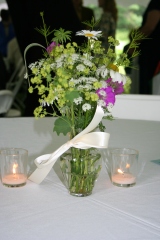 When making decisions about your floral arrangement you can check with local farmers and gardeners and look for flowers that are in season. We used wildflowers from friends’ gardens to decorate the tables and for the blessing ceremony and locally grown roses for my crown and the corsages. I remember one friend who had her wedding in the fall and the autumn theme of arrangements was gorgeous! Who knew you could do so much with mums? And a winter wedding? Did you know that if you bring your holly cuts in they will bloom with the cutest little white flowers? When you are buying flowers be sure to check if they are organic or IPM (Integrated Pest Management) certified for no or low pesticide spray. Last thing you need is to be sniffin’ poisons in your posies.
When making decisions about your floral arrangement you can check with local farmers and gardeners and look for flowers that are in season. We used wildflowers from friends’ gardens to decorate the tables and for the blessing ceremony and locally grown roses for my crown and the corsages. I remember one friend who had her wedding in the fall and the autumn theme of arrangements was gorgeous! Who knew you could do so much with mums? And a winter wedding? Did you know that if you bring your holly cuts in they will bloom with the cutest little white flowers? When you are buying flowers be sure to check if they are organic or IPM (Integrated Pest Management) certified for no or low pesticide spray. Last thing you need is to be sniffin’ poisons in your posies.
If your wedding is going to be outside in the summer like mine and Frank’s was, consider making up little spray bottles of natural “bugs-be-gone” from essential oils of lavender and rosemary and water. Healthier for you and the environment and you smell sweet but the mosquitoes aren’t as taken with you. And then if the little bottles get taken away as party favors, well you know they have been well appreciated.
Last thoughts
Remember to enjoy the day and revel in each other. Feed each other sweetly. Dance together romantically. Laugh together exuberantly. Look deeply into each other’s eyes and choose to love each other each and every day!
Website Resources for Greening Your Wedding
http://wedding.theknot.com/real-weddings/green-weddings.aspx
http://www.greatgreenwedding.com/default.php
http://www.greeneleganceweddings.com/
http://www.greenlivingtips.com/articles/97/1/Green-wedding-tips.html
Written by Arianna Alexsandra Collins
© 2009, Arianna Alexsandra Collins, © 2013 (updated)
I wrote this article originally for my local newspaper while I was planning my wedding to my now (ex)husband. (2014)
Community Building – The Work I Do
Offerings for Community Building – What’s in a name?
 I love the word offerings. The image conjured up is two hands, palms up and open, in willingness and ability to give and receive. And purpose behind those offerings, is that, in all that I do, I want to help build community. I want to network people together. What give me the most joy and satisfaction include activities that support community-building; connecting people to people, people to resources, and groups to other groups. Yes I am a networker! Just call me Arachne! Like the woman who became the spider, I see the threads of a great web and I want to help people along those threads so that they can be better connected to whom and what they need to be connected to.
I love the word offerings. The image conjured up is two hands, palms up and open, in willingness and ability to give and receive. And purpose behind those offerings, is that, in all that I do, I want to help build community. I want to network people together. What give me the most joy and satisfaction include activities that support community-building; connecting people to people, people to resources, and groups to other groups. Yes I am a networker! Just call me Arachne! Like the woman who became the spider, I see the threads of a great web and I want to help people along those threads so that they can be better connected to whom and what they need to be connected to.
What is the significance of the crow and the water pitcher? Why that for a logo?
 The Crow and the Water Pitcher is a famous Aesop Fable. A very thirsty crow sees a water pitcher on the ground. It must have been abandoned by those silly humans. Being quite the intelligent being that she is she has a looksee and aha, there is water in the pitcher. But her beak can’t reach all the way down to where the water level is. Hmm. What to do? How to get at the water? An idea strikes her. She picks up a pebble and puts in the pitcher. Not much happens. She puts in another and another. The water rises just a little bit as each pebble displaces the water. She looks for more pebbles and continues to put them in the pitcher. The water continues to rise as more pebbles are put into the pitcher. The crow continues to test to see if she can reach the water. Almost. More pebbles and then more testing. Soon, the water is where she can reach it with her beak and she drinks her fill. Ahhh, happy crow. Moral of the story: “Necessity is the mother of invention.”
The Crow and the Water Pitcher is a famous Aesop Fable. A very thirsty crow sees a water pitcher on the ground. It must have been abandoned by those silly humans. Being quite the intelligent being that she is she has a looksee and aha, there is water in the pitcher. But her beak can’t reach all the way down to where the water level is. Hmm. What to do? How to get at the water? An idea strikes her. She picks up a pebble and puts in the pitcher. Not much happens. She puts in another and another. The water rises just a little bit as each pebble displaces the water. She looks for more pebbles and continues to put them in the pitcher. The water continues to rise as more pebbles are put into the pitcher. The crow continues to test to see if she can reach the water. Almost. More pebbles and then more testing. Soon, the water is where she can reach it with her beak and she drinks her fill. Ahhh, happy crow. Moral of the story: “Necessity is the mother of invention.”
So, as the crow, let me take your great ideas – your nuggets, your pebbles – and put them to work in the world – the pitcher – so that you can manifest your dreams and drink your fill.
A Professional Environmentalist
No, “environmentalist” is NOT a “dirty” word other than many of us who call ourselves environmentalists may be happiest digging our hands in the dirt. It’s a profession, a hobby, a life style that is deeply embedded in community building in the most inclusive way.
“I am not a prophet. I am not a messiah.
I am like a small bird that has left a small boat to deliver an important message”. – Terry Tempest Williams, Author
Defining an Environmentalist
An environmentalist is an individual who advocates for the natural world when the nature-culture dichotomy is apparent. This person urges others to see human connections to the natural world, to see how humans affect the web of life. An environmentalist sees the connection between inner and outer body health, the connection between the human body and the global body, i.e. the environment. This individual thinks beyond the self in making daily decisions and forming life-affirming habits. “Is this good for me? What impact am I making on the environment? What actions can I take to create healthier ways of living with the environment?”
An environmentalist may utilize many skills of persuasion to convince the populace of her/his convictions. This individual may teach awareness about the outside world, research human induced impacts upon an ecosystem or lobby on its behalf. An environmentalist may even guard against those who seek to harm a particular species other than her/his own by physically intervening on the behalf of wildlife. This person can be someone who puts his/her life on the line for trees; she may be part of the Chipco movement clinging to a banj tree in the Himalayas, or he may be someone who lives in a tree in Oregon’s WillametteNational Forest. Environmentalists can be canvassers for the Sierra Club or someone who pulls invasive species off a beach in California. She may rescue whales from whaling ships or he may lead owl prowls at a local nature center. She may be a professional lobbyist in the state’s capital or a nature writer working at home. This person may be anyone; what defines her or him as an environmentalist, more than their job or profession, is their passion, their commitment to preserving the integrity of global citizenship.
With the understanding that we all ~ flora and fauna alike ~ are citizens of earth, environmentalists act out as spokespersons and defenders of individuals, of species, of habitats, who do not have the power to defend themselves. Whether speaking out against the injustices of environmental racism in a community who has a disproportionate amount of toxins in their bodies due to illegal dumping, or monitoring endangered puritan tiger beetle populations along the Connecticut River, an environmentalist is a person of action; committed to solving self-prescribed tasks.
Though an environmentalist may or may not have scientific figures to back up an argument against the slaughter of large predators, or the meaning behind the decline of neo-tropical songbirds, or an account of the relationship between the hole in the ozone layer and the warming of the planet; s/he will nonetheless speak out where there is a perceived injustice. More than attempting to “fix” the planet and make it “all better”, an environmentalist is someone who is attempting to change his or her own destructive habits and the destructive habits of other humans. As an environmentalist reads about or witnesses actions perceived to be detrimental to the environment, s/he sees the need for human intervention on behalf of the Earth. Regardless of whether s/he believes there is a nature-culture dichotomy, this person feels that humans can be a disruptive force on the planet. As this person recognizes human actions that harm the web of life, s/he wants to correct those actions or heal those that have been affected by those actions.
“I think a part of being an environmentalist is having grief over the way we have distanced ourselves mentally and physically from the forces that are beyond our control here on this planet. Then because of this we act out of our grief to do something about it, which may or may not be sustainable actions, depending on how much grief we feel around it, and how deeply we are immersed in it while we act.” – Walker Korby, Environmental Educator
More than winning the political argument, a person who labels himself or herself as an environmentalist needs to live a life of integrity. Not taking the moral high ground, but honestly living as sustainably as s/he is able. And though there may be much grief or anger when looking out upon human impacts on the world, an environmentalist will hopefully also see the love and beauty in the world and their connection to it.
“…remember that the earth is alive, and that all creatures deserve equal love and respect. Feelings of respect lead to gratitude; a grateful heart enables us to be ever more humbly in sympathy with other creatures. Humility allows us to see life in proper proportions, understanding that our human desires should be tempered with willing to defer to the needs of other living things.” – Joseph Cornell, Author
If a person can keep in mind that all of life longs for itself; that life competes, cooperates, lives, loves, and dies so that life can continue, then as an environmentalist, this person can then move forward with an open heart to do her or his work. This individual will then not cave into his or her grief about the state of the environment but remember that what is important here, is the joy received by making a positive difference in another’s life, whether that be a fellow human, a Butternut tree, a Fowler’s toad, or an Atlantic salmon.
Love, this deep feeling of fondness or devotion, is not merely a human concept. Love is an agreement between organisms to share or provide something of themselves. If an organism is devoted to its own life then it will not destroy the tapestry that it depends on to live. It will take what it needs and give back its whole life at the end of the journey.
“Love in its purest sense is not based upon what you get from the relationship,
but on what the relationship allows you to give.” – Judith Lasater, Author
 If you as a human can honor that agreement in all that you do; feel it in the air you breathe, knowing it’s the trees who provide the oxygen, you who provide the carbon dioxide, then you can understand the love that is the world. And when you experience this love you will not just act on your own behalf, but the on the behalf of the relationships that help sustain you and the relationships that sustain your relationships. This feeling of devotion will expand in ever greater ripples and you will see yourself as part of the Earth and you will act to the best of your ability in accordance with the cycles and processes of Earth. It is at this point the label of “environmentalist” becomes secondary; no longer are your actions focused on mending what other humans do to the environment but on building relationships with the environment. By creating healthy connections between yourself, your community, and the environment that will affirm the cycles of life you act as a model in creating a home that not just survives, but thrives. Rejoice in the fact that you too are a part of the world.
If you as a human can honor that agreement in all that you do; feel it in the air you breathe, knowing it’s the trees who provide the oxygen, you who provide the carbon dioxide, then you can understand the love that is the world. And when you experience this love you will not just act on your own behalf, but the on the behalf of the relationships that help sustain you and the relationships that sustain your relationships. This feeling of devotion will expand in ever greater ripples and you will see yourself as part of the Earth and you will act to the best of your ability in accordance with the cycles and processes of Earth. It is at this point the label of “environmentalist” becomes secondary; no longer are your actions focused on mending what other humans do to the environment but on building relationships with the environment. By creating healthy connections between yourself, your community, and the environment that will affirm the cycles of life you act as a model in creating a home that not just survives, but thrives. Rejoice in the fact that you too are a part of the world.
References
Cornell, Joseph, Listening to Nature: How to Deepen You Awareness of Nature, p. 65, Dawn Publications, Nevada City, 1987.
Korby, Walker, email reply to survey question “who is an environmentalist?”, 11/00.
Lasater, Judith, Living Your Yoga: Finding the Spiritual in Everyday Life, p. 142, Rodmell Press, Berkeley, 2000.
Williams, Terry Tempest, An Unspoken Hunger: Stories from the Field, p. 105, Vintage Books, New York, 1994.
About this Article
This article is based on a paper from Environmental History & Philosophy, a course taught at Antioch New England Graduate School, Keene, N.H. in Fall 2000.
How to be a Sustainable Professional
Sustain-Able
by Arianna Alexsandra Grindrod
“Tell me, what is it you plan to do with your one wild and precious life?” – Mary Oliver
What does it take for you to be sustain-able? To be response-able; able to respond with integrity no matter the situation? There are many things that tug at our attention. In this culture of more, bigger, better, faster we are also told, reduce, reuse, recycle. If you are going to be sustain-able you need to learn “first things first”. Identify what is most important in your life and focus your efforts on the best goals that will make you most effective in your professional and personal life. Whatever your ruts, the places in which you get stuck, you need to decide to pause, reflect, and consider how you want to respond. You need to decide that preparation, prevention, values clarification, planning, true “re-creation”; activities that empower, activities that broadens your mind and increase your skills, activities and actions that invest in your relationships are vital activities to invest your time in. Increasing time here increases your ability to do not just the good thing, but the best thing for a given situation.
The following “Values Clarification Merry-go-Round” activity was quite popular at my Sustain-Able workshop at the 2010 annual conference of the Massachusetts Environmental Education Society. I invite you the reader, to take some time with a friend or colleague and share your answers to the following questions. You may also decide to use this as a journal activity. This values clarification activity will get your juices flowing and allow you, in a playful way, to access what is truly important in your life.
- Tell me about one of the roles you have in your professional life and how it affects other roles in your professional and personal life?
- Describe your work environment as a habitat. What is the landscape or terrain? What are the relationship types and how do they fit together? (Parasitism, mutualism, etc)
- Tell me about a habit you wish you could break. Have you tried? And if so do you have an idea of what is blocking you from reforming this habit or breaking it all together and replacing it which a healthier pattern?
- Speak to the statement – “Use it up, wear it out, make do or do without.” How does that statement make you feel? Does it resonate or not? Is it something to live by, if so do you?
- What do you see as the confluences of environmental sustainability, organizational sustainability, and personal sustainability in your life?
- If you could any animal besides a human, what would you be and why? What qualities do you see that animal possessing? As a human, could you see yourself with those qualities? How might they play out in your life?
- Talk to me about your professional life from the lens of you as the hero.
- Do you consider yourself an environmentalist? Why or why not? What does being an environmentalist involve? What are the characteristics of an environmentalist?
- Talk to me about your personal life from the lens of a comedy. If you feel your life has been a tragedy, how could you tell it from the comedy perspective?
- Tell me about something you do to invest in an important relationship to you? How do you demonstrate the worth of this relationship to the other person?
- Tell me something you do to increase proficiency in a skill you are passionate about?
- Tell me one true value you hold dear and why.
- Does anyone remember MacGyver? MacGyver could solve a major crisis with a gum wrapper and some household cleaning agent. Pretend you are MacGyver. What crisis would you solve and how could you solve it with limited resources and time? You are welcome to use any crisis situations you have experienced in your own life.
- Tell me what you believe gives your life meaning?
- What do you want to do/be when you “grow up”?
- What is one thing you are truly passionate about? Do you sate this passion? In what ways?
What did you learn about yourself during this activity? Can you find where the confluences of environmental sustainability and your professional and personal sustainability meet in your life? This is the starting place where you can begin to form your own personal mission statement. This statement you can return again and again, like a mantra to remind you of your core values and how you will live them.
“Between stimulus and response there is a space. In that space is our power to choose our response. In our response lies our growth and our freedom.” – Stephen Covey
It is easy to become entrenched in the day-to-day and to forget about why we started on our various paths to emulate and model sustainable living in our work and personal life. We can allow ourselves to forget about what inspired us and focus on what frightens us. At these times it is crucial to return to that well of inspiration to replenish and rejuvenate. As author and educator David Orr states, “hope is an imperative” and without it we are lost. So take the time to replenish your well; retain those playful parts of yourself, those parts that can remember how to solve a problem with excitement and hope. We are each “MacGyvers” with our little upbeat, heroic theme songs running around in our heads as we greet each new day with renewed enthusiasm. (What’s my theme song, you ask? It’s the first part of the Indiana Jones theme song.)
“We are meant to live as rivers – flowing creative energy into the expression of life, meandering as opportunities arise, branching when conditions allow, leaving behind the rich fruits of our labors as gifts to others.” – Bradford Glass
Resources on the path to the confluences of sustainability:
- First Things First by Stephen R. Covey, A. Roger Merrill, Rebecca R. Merrill © 1994
- The 7 Habits of Highly Effective People by Stephen R. Covey © 1989
- “Purposeful Wanderings” by Bradford Glass, http://www.roadnottaken.com/
- The Right Questions by Debbie Ford, © 2003
- Ask and It is Given by Jerry and Ester Hicks, © 2004
- The Transition Handbook by Rob Hopkins, © 2008, http://transitionculture.org/
- For more information on building local resiliency and sustainability visit: http://transitionmassachusetts.ning.com/



